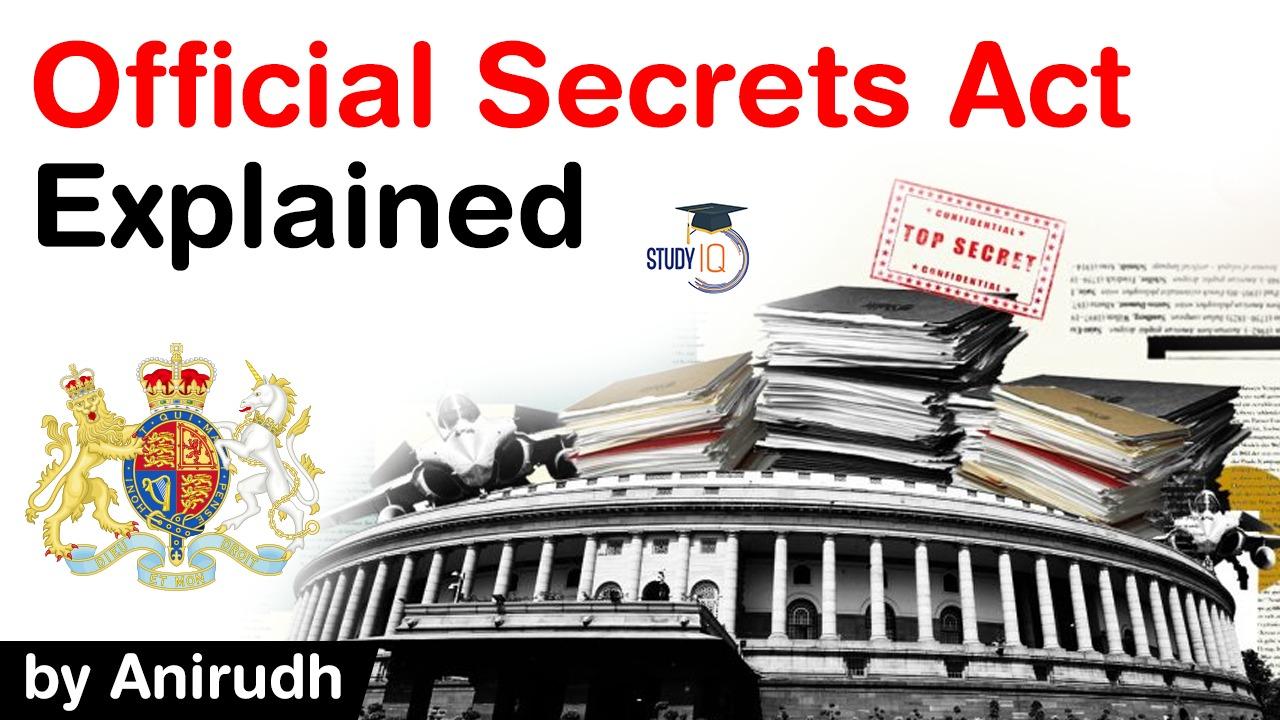Table of Contents
About OSA’s History
- OSA has its roots in the British colonial era. (The Indian Official Secrets Act, 1889. )
- This was brought in with the main objective of muzzling the voice of a large number of newspapers that had come up in several languages, and were opposing the Raj’s policies, building political consciousness and facing police crackdowns and prison terms.
- It was amended and made more stringent in the form of The Indian Official Secrets Act, 1904.
New Version in 1923
- In 1923, a newer version was notified.
- The Indian Official Secrets Act 1923 was extended to all matters of secrecy and confidentiality in governance in the country.
- It broadly deals with two aspects —
- spying or espionage, covered under Section 3. Secret information can be any official code, password, sketch, plan, model, article, note, document, or information.
- disclosure of other secret information of the government, under Section 5. Under it, both the person communicating the information and the person receiving the information can be punished.
- Note: Section 3 Just tells the form of secret. Doesn’t tell, what is considered as secret.
Secret = Government Discretion
- Also, OSA itself does not say what a “secret” document is. It is the government’s discretion to decide what falls under the ambit of a “secret” document to be charged under OSA.
- Accordingly, the government decides what a classified document it.
- It has often been argued that the law is in direct conflict with the Right to Information Act, 2005.
RTI vs OSA
- RTI wins the battle: Section 22 of the RTI Act provides for its primacy vis-a-vis provisions of other laws, including OSA. This gives the RTI Act an overriding effect, notwithstanding anything inconsistent with the provisions of OSA.
OSA takes the war:
- However, under Sections 8 and 9 of the RTI Act, the government can refuse information. Effectively, if the government classifies a document as “secret” under OSA that document can be kept outside the ambit of the RTI Act.


Why in news now?
- The Delhi police has arrested a strategic affairs analyst and two others – a 30- year-old Chinese woman and her “Nepalese accomplice” – under the Official Secrets Act (OSA).
- The police claimed that Rajeev Sharma, the analyst, had passed on information such as the deployment of Indian troops on the border to Chinese intelligence officers. The other two have been arrested for allegedly “supplying him (Sharma) huge amounts of money routed through hawala channels for conveying sensitive information to Chinese intelligence”.

Sharma wrote and editorial for Global Times
- On September 7, Sharma wrote a piece for Global Times, titled ‘A rapprochement road map for Beijing and New Delhi benefits both countries’, in which he said, “The steady deterioration of bilateral relations since the night of May 5, when the latest standoff began, has practically evaporated all the diplomatic gains of the past years in one stroke. The current crisis is the biggest threat to normal ties between the two sides since 1962. It’s a lose-lose situation for both. Their common objective must be to build a better and peaceful future for their peoples and not a military buildup against one another.”

- “This (arrest of Rajeev Sharma) is on account of the dubious track record of the Special Branch. More generally also, the record of Delhi Police is hardly a shining one. On the basis of the statement of the police released to the media, we have no hesitation in saying that the police action is high-handed, and may be inspired by obscure or questionable considerations,” the Press Club of India statement read.
Comments
- Does a democracy require a secrecy law?
- Is OSA in contradiction with RTI?
Latest Burning Issues | Free PDF






















 WhatsApp
WhatsApp